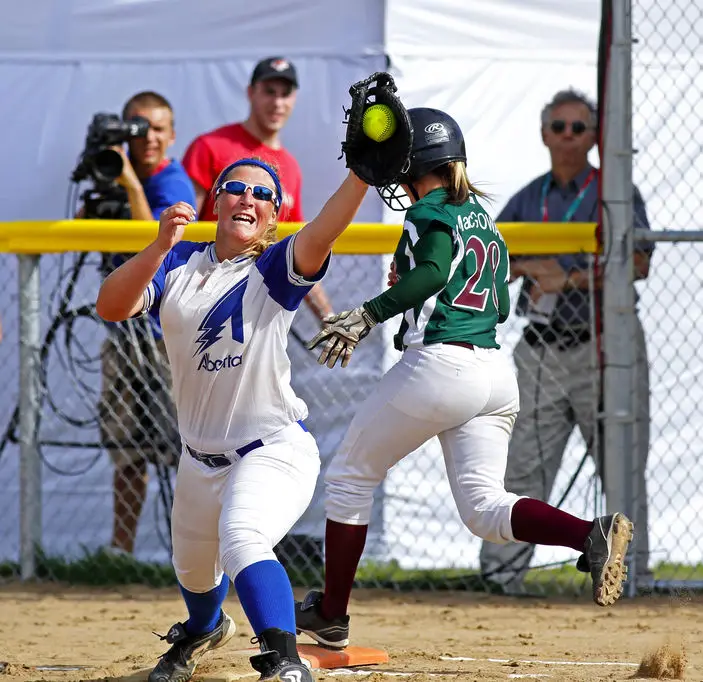
A majority of throws in softball are overhand, and the distance from the thrower to the target will often determine the softball throwing accuracy. What throwers need to keep in mind though, is that the bigger the arc, the better the chance for the throw to go off target. This is because the likely reason for the big arc is that the release of the ball was basically in the wrong place. Not only that, an large arc would indicate that the thrower was not actually looking directly at the target when she released the ball.
It is the path of the throwing hand and where the thrower snaps that release that will dictate the path of the ball. Some of this is a timing issue and some is just having that sight line directly to the target.
Cues That Effect Softball Throwing Accuracy
There are game factors and player factors that will effect the accuracy of the throw. Here are a few.
Game Factors:
Timing of the play:
The timing would be how fast the ball needs to get to its destination. There might be a runner on their way to home or the last out is almost at first base and the thrower needs to get rid of the ball quickly. This can cause stress in the thrower who is perhaps rushing the throw. This as you know is when errors occur. For this, mental training is a great tool for keeping the mind relaxed while hurrying the body.
Location of the play:
This will dictate the type of throw used which is effected by the skill level of the thrower. If she is further away than her strength can execute, then the throw might not get there on time, and if it does, it might be away from the target. This is when the relay is an important tool
Player Factors:
How the ball is fielded:
If the ball is fielded off balance, the thrower needs to get into position quickly to make an accurate throw. This is where balance and coordination are important along with the same mental training skills that are used when in a hurry. It is a good idea to actually practice fielding balls off balance so that the team can practice getting into correct throwing position or making the quick adjustment necessary to make an accurate throw.
Confidence in the receiver:
If the thrower is not confident in the receiver, she will hold up on her throw. This is very counterproductive because she is going to either throw it over the receivers head or into the dirt. This thrower will hang onto the ball too long and try to direct the ball softly with her hand rather than using the speed of her arm to make the throw. The snap of the wrist on the throw is critical to getting the ball to the target successfully.
Confidence of the thrower:
On the other hand, if the thrower is not confident in her own abilities, the same thing can happen as if she is not confident in the receiver. Trying to softly aim the ball or thinking to much about not making an error, will most times cause an error.
Throwing Accuracy and Speed
Throwers will develop accuracy at the speed that they practice at. By incorporating speed drills into the throwing portions of your practice plan, players will have an opportunity to use their skills at the various speeds that they will need them during a game.
We know that the long rainbow throws are not going to get anywhere fast. One thing we often see, is when there is no one on base and the outfielder catches a fly ball, she will throw a long rainbow into the infield. I recommend that every single throw is made as if there is an out to be had. So if there is a caught fly ball with no one on base, the outfielder gets the ball in as quick as possible using the relay if needed. This creates good habits and solidifies the fact that every throw is important.
You could also do this during practices. Every time a ball is fielded, have the fielder throw the ball as if there is a runner on base. Regardless of where she is throwing to. The point is that every throw is hard and the transition is quick. This provides the most opportunities to perfect the throw and to increase the strength of the throwers.
Importance of the warm up
During the warm up, players need to think of every throw as a part of getting ready to make the most accurate and quick throws possible. It is important that players do not throw too hard too fast, or they will begin to feel the pain in their shoulders. The speed at which they are throwing when this occurs is the fastest they will be able to throw during a game. It is not a race or a competition on who can throw the hardest or furthest. This type of activity is for after the warm up. Each player has their own warm up point to where their body is ready to throw hard.
We know that many games are lost on throwing errors so it should not be too difficult to explain the importance of these points to the team.

